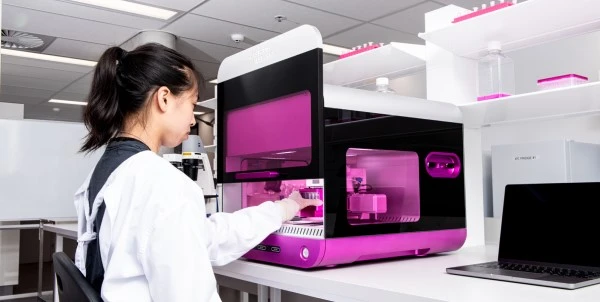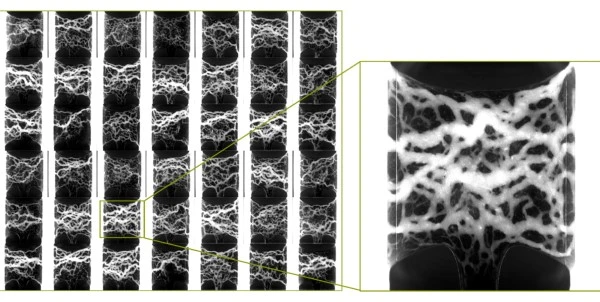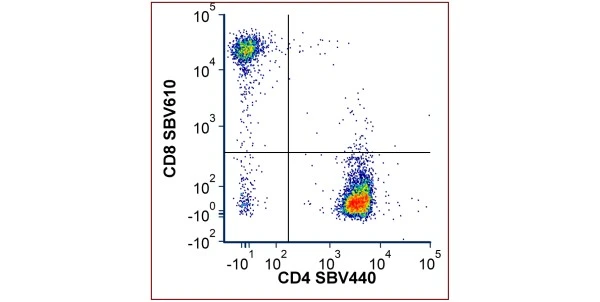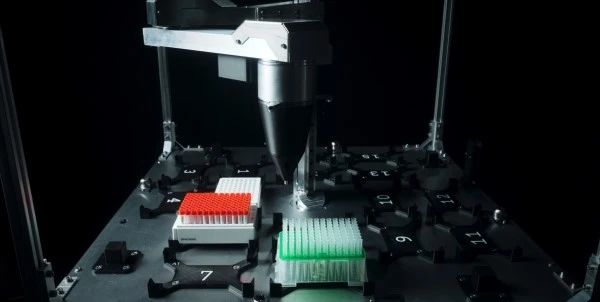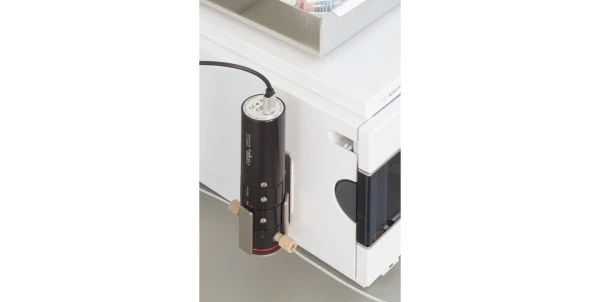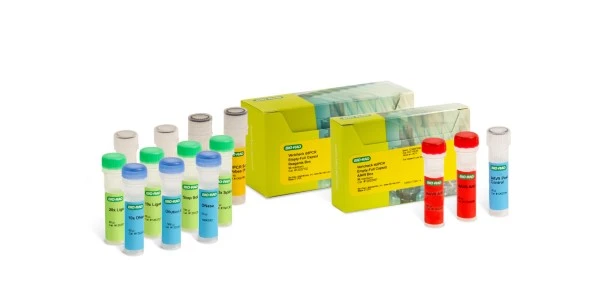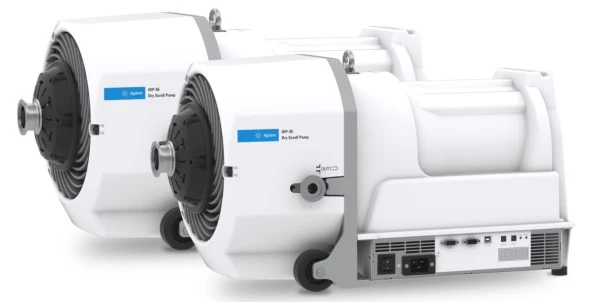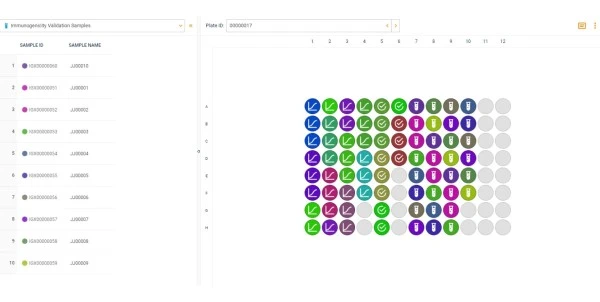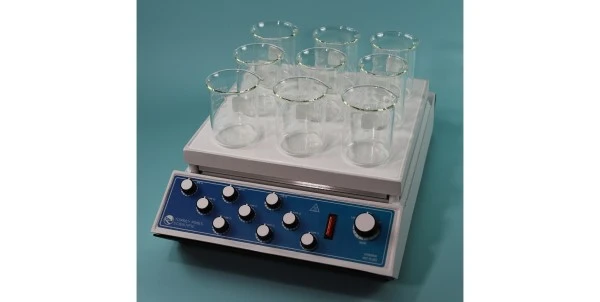
New Liquid Handling Systems: Automating Tasks to Optimize Lab Workflows
The main pillars to automated liquid handling systems include precision, throughput, integration.
This foundation enables a wide range of workflows, from automated screening applications, to large-scale clinical sample analysis, and more.
Emerging applications, such as those arising during the COVID-19 pandemic, have helped motivate the integration side of automated systems. In the life science research lab, this integration takes the form of routine sample prep and liquid dispensing. In the clinical research lab, integration is enabling higher throughput of sample separations and analysis. In the diagnostics lab, integration is helping drive new technologies focused on rapid screening for viruses and other targets. Here are a selection of new liquid handling products for enhanced lab workflow integration.
Pipetting and Semi-Automatable Lab Tasks
Pipetting is a necessary and ubiquitous task which nearly every life science lab requires. The need for precision is countered by the fact that all users of manual pipettes have unique styles. Automating the mechanics of pipetting can potentially remove this variability, thereby increasing precision and productivity.
Andrew Alliance has focused on this concept, and has built pipetting robots that use conventional pipettes with robotic functionality. A result of five years of user feedback, the platforms are controlled by OneLab software, which enables reproducibility and full traceability for life science applications. This technology was recently acquired and now complements the Waters instrument portfolio.
Gilson has a broad portfolio of innovative pipetting solutions, from manual pipettes with expanded functionality to automated sample handling solutions.
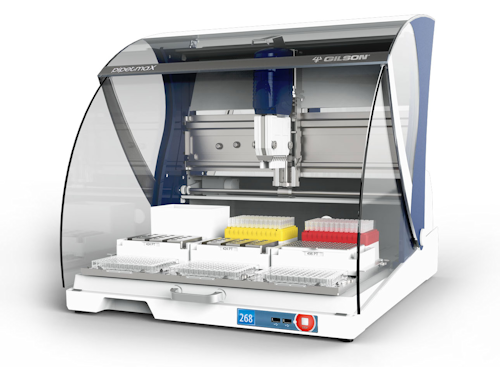
The PIPETMAX (shown on the right) is an easy to use automated system designed for biological sample preparation and assays. The device uses proven PIPETMAN technology, ensuring accuracy and precision, with flexibility to handle various liquids and configurable formats. Freeing up time by automating tedious pipetting tasks is the major advantage with the PIPETMAX
Not quite automated, but certainly connected… Gilson also offers the “Connected” series of pipetting devices, including the TRACKMAN Connected US and Connected PIPETMAN. Look for our upcoming infographic detailing these amazing Bluetooth enabled devices.
Hamilton has centered on a brilliant concept with the Microlab 600 liquid dispensing system. Every lab suffers from liquid handling tasks that are too small to automate but to large to reliably handle by manual pipetting. The Microlab 600 targets this sweet spot by providing top-level performance, in a compact, versatile, easy to use device. Check out this article for a deeper dive into this innovative technology.
Automated Screening, Assays, and Next Gen Applications
Labs often have the requirements for automatable workflows. Whether the goals are compound screening, cell-based assays, or next generation sequencing applications, the name of the game here is maximized consistency with accelerated throughput.
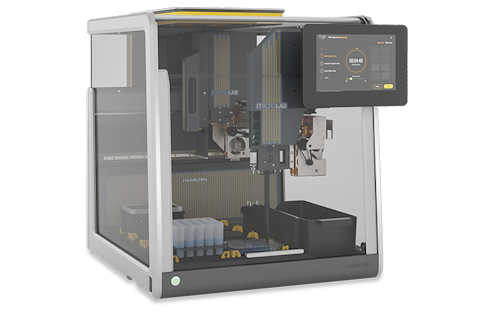
The Hamilton portfolio extends beyond the Microlab 600 (described above) to include the Microlab Prep automated platformm (shown on the right). This scaled-up version is designed to automate pipetting and liquid transfer on a larger scale, while still easily fitting on a benchtop or biological safety cabinet.
The Hamilton Microlab Nimbus, STAR, and VANTAGE incorporate increasing complex and robust capabilities for automated liquid handling, all while maintaining the quality and performance for which Hamilton devices are known.
Agilent offers the Bravo automated liquid handling platform for sample prep automation in compound management, screening, and cell-based assay applications. The system is armed with over 60 accessories ranging from heater/cooler units to shakers, and devices can be tailored to suit most sample prep protocols.
The Biomek series of automated liquid handling systems are mainstays for large-scale, high-throughput lab workflows. A smaller scale member of this family, the Biomek NXP, brings the power and flexibility of these devices down to research lab size. Pipetting, dilution, dispensing, and integration are all controlled in a single automated device, powered by the proven Biomek software.
Tecan has a broad portfolio of automated solutions, including the Fluent and the Freedom EVO, designed for large-scale throughput, flexibility, and intelligent functionality. The Tecan D300e Digital Dispenser is a benchtop instrument capable of picoliter to microliter volume handling. Enabling challenging plate-based experiments while minimizing reagent waste is the key with this device.
Sample Prep and PCR
The technologies discussed thus far advance the concept of “integration” in the life science research lab. By automating tasks and increasing precision, this integration serves to streamline workflows and free up the hands of researchers to focus on the important stuff – the science.
An array of new technologies now focus on streamlining sample preparation upstream of important platforms such as qPCR, the predominant technique currently used for SARS-CoV-2 identification and quantification in the lab.
The chemagic Prime 4 instrument from Perkin Elmer performs automated nucleic acid isolation and assay setup. The fully automated system offers hands-free sample transfer, DNA and RNA isolation, normalization, and PCR setup for research applications.
The Eppendorf epMotion 5070 and 5073I systems have multiple worktable positions for extended workflow capabilities. The use of EasyCon or MultiCon control modules allows fully electronic functionality with care, accuracy, and precision on par with the needs of sensitive PCR and qPCR applications.
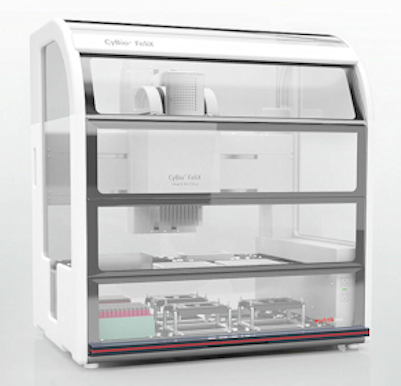
Analytik Jena offers a range of nucleic acid extraction platforms and kits for sample prep of viral RNA from swabs and specimens. The InnuPure C16 touch platform is designed to process up to 16 samples using the innuPrep DNA/RNA extraction kits and reagents.
The CyBio FeliX (shown on the right) can handle up to 96 samples using the combined extraction platform and liquid handling system. The CyBio FeliX system is fully automatable, with 12 positions on two levels, and the ability to handle 1-384 pipetting operations with interchangeable heads.
Outlook
Advanced liquid handling technologies have not only increased lab productivity and performance, but are playing important roles in reducing waste and excess resource usage. Beyond this, the development of faster more decisive testing technologies, such as large-scale RT-PCR-based mass population screening, may continue to drive liquid handling product innovation in the fight against emerging challenges.
View Liquid Handling and Pipette Listings on LabX.com
